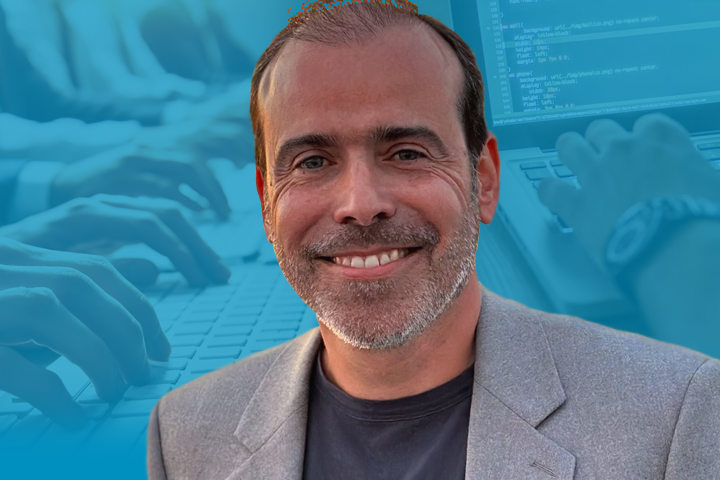Interview: Tiago Lopes on why agility is the key to digital product success

We talk self-service, innovation and changing customer expectations with Tiago Lopes, Cerillion’s newest Product Manager.
Hi Tiago, and welcome to the Cerillion team! Can you tell us more about your professional background and experience in the telecoms industry, including your most recent roles and responsibilities?
For over 20 years, I’ve been collaborating closely with customers delivering and developing BSS products for the telecoms industry.
My two main passions are products and people. My every day’s focus is to develop innovative and disruptive products that users are willing to spend time with and, preferably, I want to collaborate with people that I can inspire and can inspire me.
Over the years, what sorts of products and services have you worked on, and how have customer and user expectations changed?
The most advanced telecom firms are trying to move away from traditional billing and CRM systems that are quite technology centric. Today, the mindset is more outside-in, driven by customer experiences (CX), and BSS products are evolving in that direction quickly.
Communications Services Providers (CSPs) are striving to be more sympathetic with their customers’ problems, with the most successful ones able to emotionally engage with customers using personalised interactions delivered via digital channels.
While CSPs have always been at the edge of innovation and technology, this CX trend really comes from Digital Services Providers (DSPs), such as Netflix and Uber, who were pioneers understanding how to master customer engagement…and make money out of it.
CSPs are adopting the same technologies, including generative AI and low-code platforms, unlocking faster time-to-market and automation, at a much cheaper price.
They are also embracing as-a-service business models, enabled by cloud technologies, where price is determined on a per consumption basis, and developing partner ecosystems of products and content to expand their catalogue offering.
Customers now want everything much faster, at lower risk and cheap…and expect to grow exponentially, based on experiment, customer feedback, high volume of business transactions, and through re-usability of products and features.
What are some of the latest trends and developments in the telecoms sector, and how are these influencing your current work?
While the digital divide is still a reality – and will continue to be in the years to come – for the digital-connected, social media has caused a revolution around how people access and consume information.
People get acquainted with new products and services via social media, where a considerable number of purchasing journeys start. It is so powerful that influencers have become brand ambassadors, and you really want them on your side. We have also seen many new brands exclusively addressing these digital-savvy customer segments. And, we have seen the traditional and established service providers developing new digital strategies to reduce churn and onboard new customers.
Moreover, consumers are adopting new behaviours where less is more: simplicity has become a lifestyle.
Consumers demand freedom (no contracts) and they want choice; so pay-as-you-go, unlimited and build-your-own plans have become increasingly popular. This is driving an accelerated development of competencies and technologies associated with self-service applications, digital marketing and digital sales.
CSPs are seeing their customer bases becoming fluid; large migrations between operators, with a high volume of new activations and churn. Therefore, they must be equipped with frictionless digital journeys to onboard new customers. Contextual customer interactions, loyalty and reward schemes, community-based offerings and unique digital experiences are also common retention strategies.
What is your approach to understanding customer needs and ensuring that products are developed to meet or exceed those expectations?
To me, the answer is agility.
The basis of agile is to gather customer feedback from small iterations of your product development and, when you have an idea, validate with customers; when you have a prototype, validate with customers; when you have an MVP, validate with customers; and so on and so on!
What does “validate” mean? It means that users have tried your products, come back to use them again (or not!), and are then willing to recommend them to others. It means that you have a successful outcome from your R&D investments. Customers see value, and your business in turn grows because customers will pay to continue using your products.
Furthermore, you can embed user behaviour analytics, enabling continuous validation and improvement of your products too.
However, agility means also pivoting – changing your mind based on customer feedback. In many cases, you should let your ideas die. Most likely, your ideas were bad anyway. So, move fast and fail fast!
What opportunities do you see for Cerillion’s BSS/OSS solutions in the ever-competitive telecoms landscape?
What is it that we did not talk about until now? That’s right – I haven’t mentioned B2B.
Right now, B2B telecoms is really missing out on digital, and is therefore unable to scale up and grow exponentially. B2B service providers typically rely heavily on manual operations, delivered by sales and support teams.
In the SOHO and SMB segments, most product offerings are fairly simple and standardised, managed by a new generation of young entrepreneurs who really have a strong preference for digital interactions. So why does the B2B buyer’s digital journey end so soon with a “Talk to one of our agents”? Why are most B2B user journeys not automated and delivered via digital channels?
Another B2B domain that seems lacking in digital investment is partner ecosystems. Take smart cities or 5G slices for enterprises, for example, which depend on connectivity between millions of devices and people. Would it not be easier and cheaper to manage such high volumes of interactions via digital channels? Shouldn’t B2B CSPs look for solutions that deliver self-served transactions and business growth?
Cerillion has an extraordinarily strong product suite serving the B2B segments, and I believe we can grow the business and be ahead of our competitors by continuing to expand the digital journeys which support our customers’ B2B growth.
